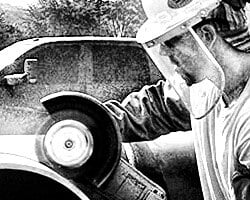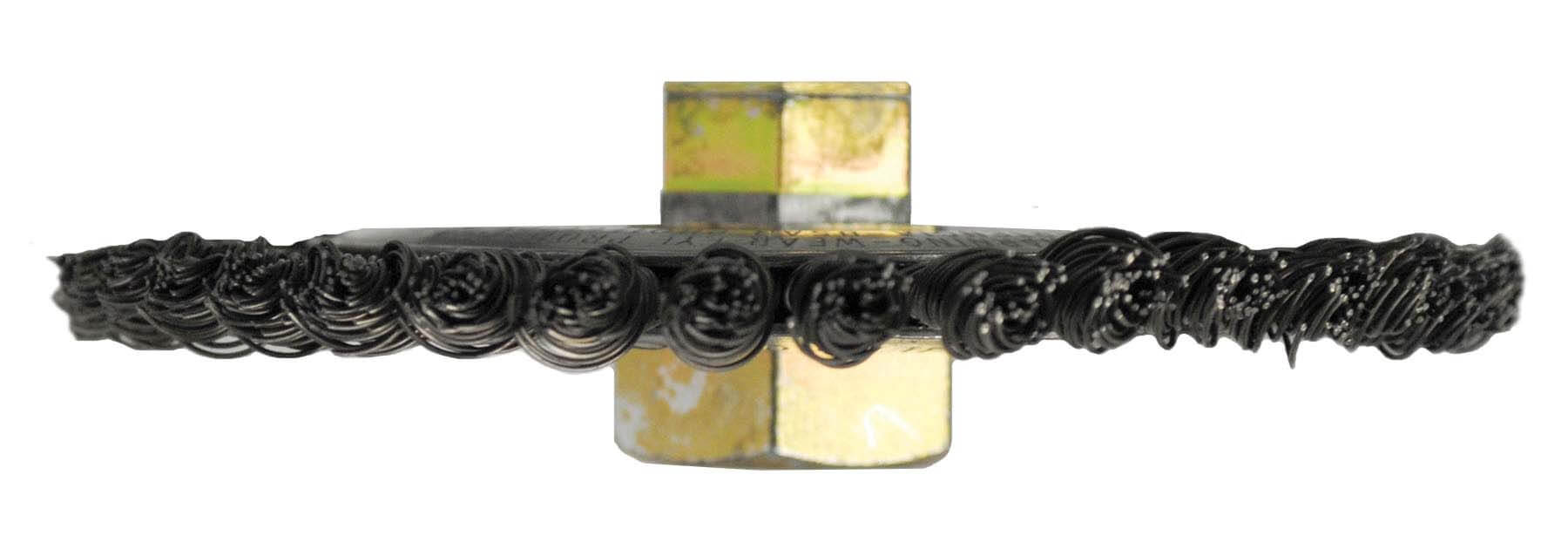Extending Wire Brush Life Creates Operational Savings

Extending wire brush life creates operational savings
Ron Vogt - Category Manager - MROP - Weiler Abrasives Group
May 15, 2019
Wire brushes for surface cleaning and weld cleaning play a key role in producing high-quality welds. But many operators lack an understanding of how to properly use these brushes to reduce their wear, thereby extending their life.
 Wire brushes are grouped into wheel brushes, end brushes, tube brushes, and cup brushes. Choosing the right brush for the application is the first step in producing the best results.
Wire brushes are grouped into wheel brushes, end brushes, tube brushes, and cup brushes. Choosing the right brush for the application is the first step in producing the best results.
“Most users know which brush to use although they don’t always use the brush the way they are supposed to,” says Ron Vogt Jr., category manager, MRO, Weiler Abrasives. “Using the right type of brush for the right application leads to long brush life.”
Beyond brush type, another feature to consider for long brush life is wire diameter. Thin wires are more flexible and more resistant to breakage but are not as aggressive. Thicker wires are stiffer and more aggressive but are more likely to break.
“Although some of it is based on the composition of the wire, in general, heavier wire breaks more readily than finer wire,” Vogt Jr. says. ”You always want to choose the finest wire diameter that will get the job done because the larger the wire, the more susceptible it is to breakage.
“For example, you would use a knotted wire brush with a heavier wire such as 0.020 in. for cleaning welds because it needs to be aggressive,” he continues. “But to remove light surface contamination from a flat surface on a small part, you may use a 0.006-in. crimp wire wheel on a bench grinder.”
For additional applications, Weiler also makes brushes with wire diameters from 0.003 in. to 0.035 in. Wire diameter is just one consideration, however, greater wire density makes the brush, less flexible and less conformable to irregular surfaces.
Trim length – the length of the wire exposed from the cup or the side plate – can also affect brush life. A shorter trim length is going to be more aggressive so, therefore, less brushing is required, providing a longer life. However, a longer trim length, which is more flexible, may be required to reach into tight areas or conform to more irregular surfaces.
 A light touch
A light touch
“Pressure is the No. 1 factor that affects brush life,” Vogt Jr. says. “With wire brushes, the wire tips do all the work so you don’t need a lot of pressure. Use the lightest brushing pressure possible to get the job done. If you put excessive pressure on the brush, you end up with long wire breakage. These longer pieces can be a safety hazard so proper PPE is critical.”
This begs the question, though: How much pressure is too much? In one particular test, Weiler found that in a 1-hour period at 5 lbs. of applied force there was no wire loss and no wires broke off. At 10 lbs., two wires broke, but at 15 lbs., 17 wires broke.
The result is that 10 lbs. of applied force or less is the best practice. Putting that into practice is another story as there is no practical way to measure the force. But, applying minimal force beyond the weight of the grinder is a good rule of thumb.
While using a brush, the operator should apply the lowest possible pressure, but it’s equally important to use the appropriate speed. Each type of brush is designed to run at a maximum rpm and should be matched to the appropriate power tool. A good rule to follow is that brushes should run at a minimum of 5,000 sfm and faster is nearly always better. But, the wire brush rating has to meet or exceed the speed rating of the tool.
In addition to applying the lightest pressure possible, orienting the brush at the correct angle increases brush life. The wire tips should be perpendicular to the work surface.
“For example, you want to use a wheel brush at 90 degrees with the least amount of pressure possible,” Vogt Jr. says. “If you use that same brush at 45 or 15 degrees, you’ll be grinding on the sides of the wire rather than the tips and that will significantly reduce your brush life. The same holds true for end brushes. For cup brushes, we say anywhere from 5 to 15 degrees is the recommended working angle. Nothing more than that because, again, you’re grinding on the sides of the wire. The key is to keep the wire tips on the work.”
Adding flare
 “There are a lot of misapplications with end brushes,” Vogt Jr. says. “People try to clean without reorienting the brush based on the flare. If you need to force the brush into a corner, you are going to get wire breakage.”
“There are a lot of misapplications with end brushes,” Vogt Jr. says. “People try to clean without reorienting the brush based on the flare. If you need to force the brush into a corner, you are going to get wire breakage.”
To solve this problem, Weiler developed a controlled flared end brush. The brush wires are trimmed to an almost pointed shape so the wires won’t flare and the brushes can be used in corners.
Another feature that extends brush life in wheel brushes is rotating the brush to expose sharp wires. A brush becomes dull after continuously rotating in the same direction. Some wheel brushes can be rotated 180 degrees to expose new, sharp tips going in the direction the tool is going to spin. Flipping brushes is a good habit on bench grinders.
Weiler also offers Dually stringer bead brushes that feature a hex nut on each side of the wheel that allows operators to easily remove the brush from a right-angle grinder and flip it. The design provides adequate tool clearance so there is no need to remove the guard from the power tool to flip the wheel. This design allows the user to take advantage of the natural self-sharpening feature of the brush to extend the brush life.
Safe use
While increasing brush life is a benefit of using wire brushes properly, the main benefit is safety. Wire breakage occurs occasionally, and it can pose safety hazards if the operator does not follow proper safety precautions. The operator should always follow the manufacturer’s instructions for proper mounting and the safety guidelines regarding appropriate pressure, orientation, speed, and length of use. Also, the operator should periodically inspect the brush to check for wear, damage, and breakage.
Another important safety practice is to always use PPE. Safety glasses, face shields, and proper clothing are critical. A dust mask is also critical to prevent the inhalation of rust or paint dust.
“Weiler follows the American Brush Manufacturing Association guidelines.” Vogt Jr. says. “With every brush we make, we put a safety slip in the package that spells out all the safety requirements. All American brush manufacturers do this.”
Susan Woods
Managing Editor
Welding Productivity and Modern Abrasives & Deburring
https://weldingproductivity.com/
Request A Test
Ron Vogt - Category Manager MROP

Resources